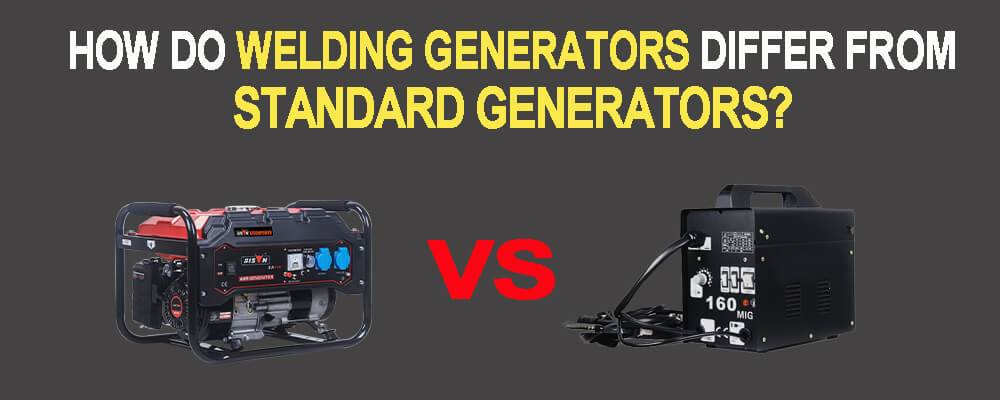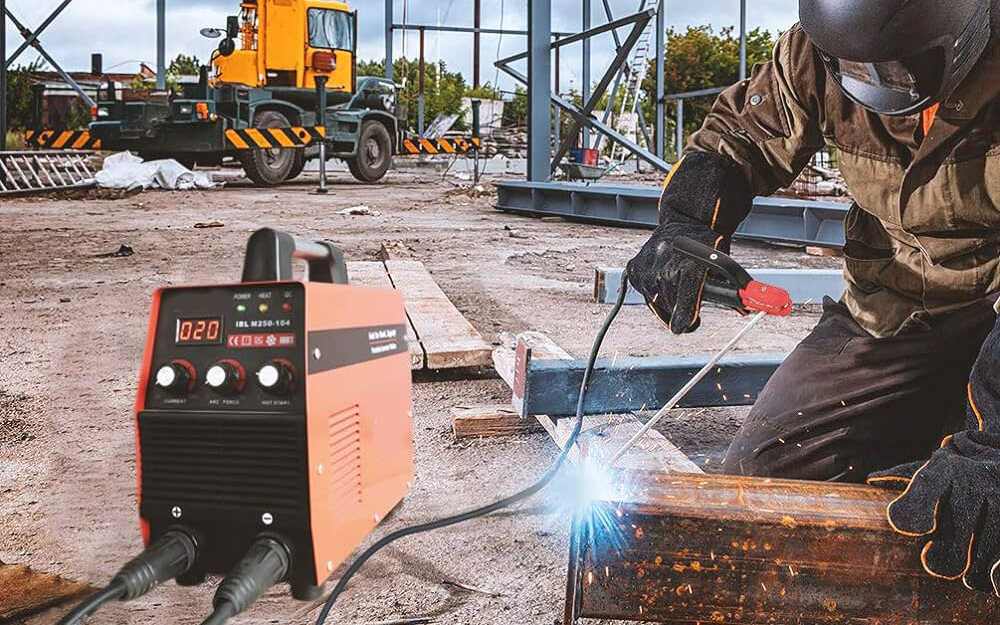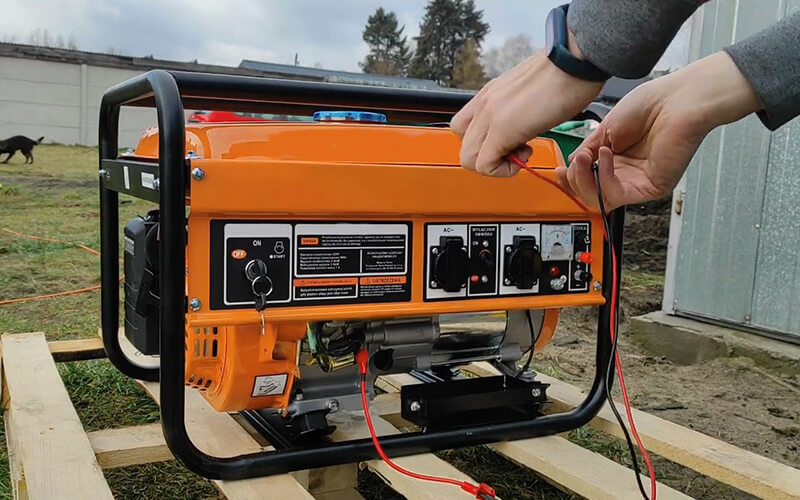16Jun 2024
table of contents

Generators play a fundamental role in providing an essential supply of electricity during power blackouts and in remote locations that lack a direct grid connection. Traditional or standard generators, commonly recognized as the sturdy standby for power supplies, are well-known and frequently used for backup electricity needs during power interruptions or in off-grid regions. Yet, an equally significant, though lesser-known is the welding generator, predominantly employed in welding operations. In this piece, BISON will guide you through a comprehensive comparison of these two distinctive types of generators. Help choose the right and proper machine.
A welding generator can be perceived as a specialized power source capable of producing electricity for diverse requirements, in addition to supplying power specifically for welding tasks. This type of generator is widely favored in industries such as construction, mining or industrial applications that need to complete welding tasks and power supply at the same time.
Grasping advantages and disadvantages of any form of technology is crucial, and this absolutely applies to welding generators as well.
Dual Use: The outstanding advantage lies in its dual function - it can be used as a generator as well as a welding machine. This makes it an extremely versatile tool that can be used for field work in remote locations without the need for a separate machine.
Mobility: Welding generator is engineered to be mobility in mind. Their compactness allows them to be transported and used in different locations, making them ideal for those who need a mobile option for both power and welding needs.
Durability: Welding generators are built to endure the significant wear and tear commonly linked with intensive welding processes, and they frequently find use in challenging environments.
Potential overuse issues: Using one machine for two purposes can lead to overuse and cause wear and tear issues more quickly. In these types of circumstances, consistent upkeep is crucial.
Welding generators prove to be incredibly beneficial in settings that necessitate both power provision and welding capacities. Here are some instances where they demonstrate their usefulness:
Construction sites require a lot of welding and the need for auxiliary power is also high. Welding generators provide a one-stop solution here. These devices are also essential for tasks such as vehicle or equipment repairs in remote locations. In power outage or disaster relief situations, welding generators can provide the necessary power and assist in repair work.

Commonly referred to as a conventional generator, standard generator is designed to transform mechanical energy into electrical power. This mechanical energy often stems from electric motors, which might use various fuel sources, like gasoline, diesel, or propane. This mechanical power, in turn, induces rotation of magnets within the generator's coils, subsequently sparking an electric current.
Generators vary widely in capacity, from small portable generators suitable for powering a few devices to large industrial generators capable of restoring power to an entire building or facility during a power outage.
Standard generators have a wide range of uses, from backup power for homes and businesses to outdoor activities or recreational activities, emergency services, and more. With powerful capacity and versatile applications, they play an important role in facilitating the smooth operation of countless industries and scenarios.
While both welding generators and standard generators essentially generate electricity, the two devices are actually quite different in various aspects. However, they do share certain common features. Let's delve into their similarities and differences based on the listed points.
At the heart of both welding generators and standard generators is transforming mechanical energy into electrical energy. This procedure entails engine, powered by fuel, operating alternator to create electrical energy.
And both kinds employ fuel - often gasoline, diesel, or propane - to operate the engine, subsequently producing electricity.
Some models of both electric generator types are designed for portability, allowing users to transport and use them in multiple locations.
Standard generators are engineered to supply electricity during power blackouts or in locations devoid of grid electricity. Their principal role is to generate steady and reliable power source for operating electrical devices.
Conversely, welding generators are specifically constructed to supply power for welding operations. They usually come with both welding equipment and the generator.
Welding generators generally have a lower overall power output compared to standard generators. They are specifically designed to provide high current at low voltages, making them ideal for running welding equipment, which typically requires voltages below 100V despite the high current amounts.
In contrast, standard generators produce higher voltages, which are suitable for a wide range of household or industrial appliances.
Standard generators provide alternating current (AC), which is suitable for running most residential, commercial, and industrial equipment.
However, welding generators require a direct current (DC) output for the welding process, as most welding rods require DC. Some models may be able to provide both AC and DC outputs, providing greater versatility.
Given that both types of generators can run on similar fuels, fuel efficiency is the difference between them. Standard generators designed for extended use will often place more emphasis on fuel efficiency and may operate in "peak" and "eco" modes for power management.
For welding generator machines, fuel efficiency may not be a primary consideration, as the focus tends to be on providing high current for the welding process.
While portable versions are available for both types, standard generators are usually more substantial and weightier, particularly those used as building backup power. Due to the field-oriented nature of welding jobs, welding generators typically have a portable design, prioritizing transportation ease and a robust build to resist tough settings.
The control panel on a standard generator is primarily used to manage power output, monitor fuel levels, and have safety features such as circuit breakers.
However, in addition to standard power management features, the control panel on a welding generator may also have controls for regulating welding current, selecting AC or DC output, or supporting the operation of other welding accessories.
The application range of standard generators includes homes, events, emergency services, etc., mainly used to provide power during power outages or in areas without grid power.
Welding generators are mainly used in the construction, shipbuilding, pipeline industries, and field repairs, where welding must be performed "off the grid" or outdoors.
In summary, while both machines are called generators, they are used for different purposes. Welding generators are specialized to drive the specific needs of the welding process and include features specific to that use, while standard generators are more like "general purpose machines" designed to power a wider range of appliances and equipment.

Choosing between a welding generator and a standard generator depends primarily on the specific power needs at hand, as well as other factors. The main considerations are covered below.
Your main power requirements should be one of the early things to think about. In situations where you need to operate welding equipment in an isolated or open-air setting with possible power supply issues, a welding generator would be the best fit. It's engineered to deliver the distinctive power needs of welding tools, characterized by low voltage and high current.
On the other hand, if you need to power general electronics, such as in a residential setting, at an event, or as an emergency power backup, a standard generator will be ideal. These generators can provide the higher voltages required by most household appliances.
If the task requires high-amperage welding at various job sites, a rugged, portable welding generator will be the best choice. If you are doing smaller projects or home welding activities, a smaller welding generator may be sufficient.
As for standard generators, larger projects or whole-house backup power require a more powerful (and possibly stationary) generator. Smaller, portable standard generators can be used for camping, tailgating parties, or small events.
Both welding generators and standard generators require regular maintenance for optimal performance and longer life. Consider the maintenance needs of each type, including the availability of parts and service.
The overall cost of each generator will also influence the decision. Standard generators can range in price depending on size and features, but may have lower operating costs due to greater fuel efficiency and less demanding use. Welding generators may be more expensive due to their specialized nature and rugged construction for professional use.
Noise level can be a potential deciding factor, especially in a residential setting. Traditional generators can be noisy, but some models are designed with noise reduction technology. Welding generators, especially those with larger engines, also produce noise, although it is less of a problem in the typical industrial scenarios in which they are used.
Ultimately, the decision between a welding generator and a standard generator depends on your specific power needs, project size, portability needs, and budget. It is critical to carefully evaluate requirements and limitations to ensure that the most appropriate type of generator is selected.
Above, we explored the similarities and differences between welding generators and standard generators. generators are designed specifically to provide power in welding operations, emphasizing high current at low voltage. They are typically equipped with welding equipment, and their user interface allows for control of welding-related factors. Standard generators meet a wider range of power needs and can be used as a backup power source for homes, businesses, or to power remote areas. They are engineered to deliver steady and reliable power output at elevated voltages to operate usual domestic or industrial devices.
The significance of selecting the appropriate kind of generator is paramount. Opting for an unsuitable one could result not only in inadequate functionality, but also potential safety hazards, decreased mobility, and extraneous costs. Therefore, it is critical to carefully evaluate your needs, considering your power requirements, project size, current requirements, portability needs, maintenance expectations, noise tolerance, and budget. Find the generator that best suits your specific needs.
BISON is always available to provide you with further selection guidance. Should you possess any particular needs, don't hesitate to reach out to us. BISON are devoted to assisting you in making a well-informed, assured choice.
inquiry form here
BISON BLOG, All the latest news and views from Bison Machinery.
Related Articles
Everything you need to know about plate compactor Open Frame vs Closed Frame Generators: What's the Difference? Generator Backfires Trowel machines: Introduction, types, working mechanism and buying guide how to clean a concrete mixerRelated Products